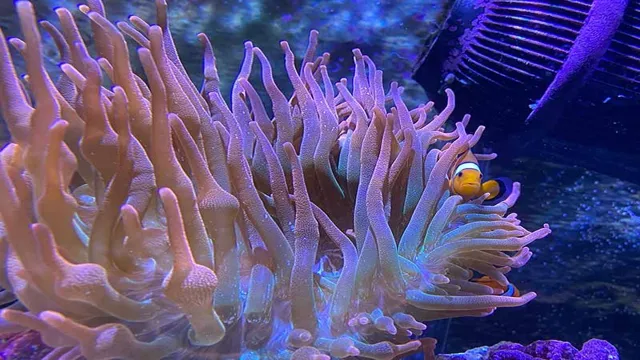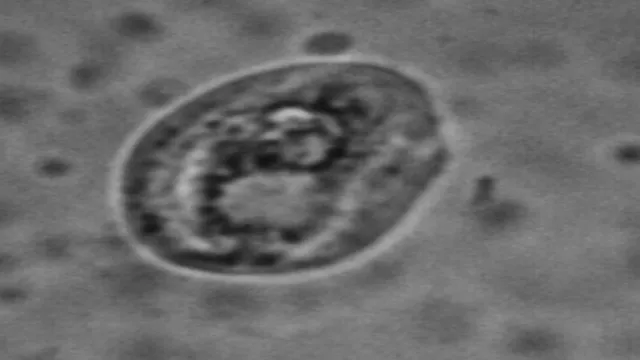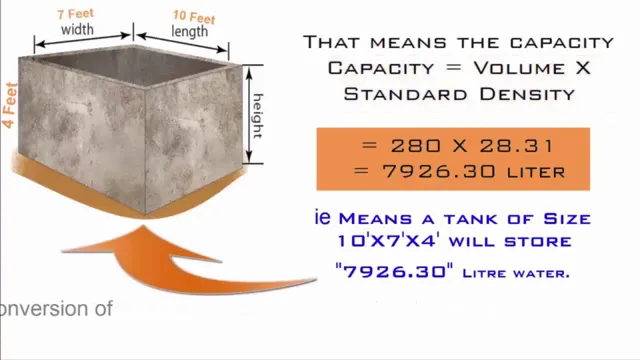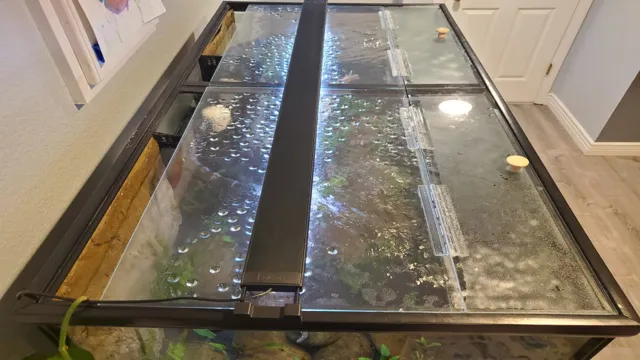Is the pH level in your saltwater aquarium too high? Don’t worry! You’re not alone. Maintaining a stable pH level is one of the most challenging aspects of keeping a healthy aquarium. Saltwater aquariums are particularly sensitive to fluctuations in pH levels.
High pH levels can cause stress and harm to your delicate aquatic creatures, leading to various health problems or even death. Luckily, there are several ways to lower the pH level in your aquarium, depending on the cause of the high pH. While there are many commercial pH-lowering products available on the market, most aquarium owners opt for more natural and affordable remedies.
In this blog post, we’ll look at some practical tips and tricks on how to lower pH in your aquarium. We’ll discuss the common causes of high pH levels, the impact of pH on your aquarium’s ecosystem, and explore simple solutions to maintain a healthy and happy environment for your aquatic pets. So, sit back and enjoy!
Understanding pH in Saltwater Aquariums
Maintaining the right pH levels in a saltwater aquarium is crucial to the health and well-being of your fish and other aquatic life. High pH levels can lead to poor immunity and stress for your fish. One effective way of lowering pH levels in your aquarium is by adding natural materials, such as driftwood or peat moss, to the tank.
This technique gradually releases organic acids, which lead to a gradual reduction in pH. Another method involves the use of a buffer solution that can safely lower pH levels without harming your fish. Always remember to monitor pH levels regularly and make adjustments accordingly to maintain a healthy aquatic environment for your fish.
By following these simple tips, you can easily lower the pH levels in your saltwater aquarium and ensure the well-being of your beloved pets.
pH Levels and Its Effects on Marine Life
As a saltwater aquarium enthusiast, you need to understand pH levels to maintain a healthy aquatic environment. pH is a measure of the acidity or alkalinity of a solution, and it affects the survival and well-being of marine life. In a saltwater aquarium, the ideal pH range is between
6 and Anything below
0 is considered acidic, while anything above 5 is alkaline. When the pH levels in your saltwater aquarium fluctuate, it can have adverse effects on your fish, coral, and other aquatic organisms.
For instance, low pH levels can make it difficult for marine life to absorb calcium, which is essential for building their skeletons and shells. High pH levels, on the other hand, can lead to excessive growth of algae, which can negatively impact the health of your aquarium. One way to ensure that the pH levels in your aquarium remain stable is by testing the water regularly.
You can use a pH test kit to monitor the level of acidity or alkalinity in your aquarium. If you notice any fluctuations, you can take corrective measures such as adding a buffering agent to raise or lower the pH level. In conclusion, understanding pH levels in saltwater aquariums is crucial for maintaining a healthy aquatic environment.
With the right pH range, your marine life can thrive and live a happy life in their underwater world. So, keep an eye on the pH levels in your aquarium, test the water regularly, and take appropriate actions to keep the levels stable.

Causes of High pH Levels in Saltwater Aquariums
If you are a newbie to saltwater aquariums, understanding pH levels is essential. pH is a measure of how acidic or alkaline a substance is, and in aquariums, it’s a crucial factor to ensure a healthy and stable habitat for your fish, coral, and invertebrates. Typically, the ideal pH range in a saltwater tank is between
0 and However, sometimes, the pH level can fluctuate above or below this range, and that’s where problems arise. (See Also: How to Build an Aquarium Sump Filter: A Comprehensive Guide for Beginners)
It’s crucial to keep the pH stable. High pH levels can have various causes, such as inadequate aeration, evaporation, excess lighting, or overuse of chemicals like buffers or alkalinity boosters. High pH levels can be dangerous for fish and other aquatic creatures and can cause stress, illness, and even death.
Therefore, monitoring and controlling pH levels are essential for a healthy saltwater aquarium environment.
Ways to Lower pH in Saltwater Aquariums
Maintaining the correct pH level in a saltwater aquarium is crucial for the well-being of the aquatic life. If you find that your aquarium’s pH levels are too high, there are several methods to bring them down. One way is to use a buffering agent that is specifically designed to lower the pH level.
These products work by neutralizing the alkaline water with an acidic solution. Another method is to increase the carbon dioxide levels in the aquarium, which helps to lower the pH. This can be done by adding a small air stone to the aquarium, which will allow for adequate gas exchange.
Adding peat moss to the filtration system is also a natural way to lower the pH level as it helps to release tannins that will acidify the water. However, it’s essential to monitor the pH level regularly to ensure it remains stable and doesn’t become too acidic. By taking these steps, you can keep your saltwater aquarium’s pH levels under control and maintain a healthy environment for marine life.
Diluting with Freshwater or RO/DI Water
Lower pH in saltwater aquariums One effective way to lower the pH level in your saltwater aquarium is by diluting the water with freshwater or RO/DI water. RO/DI stands for reverse osmosis/deionization, which is a filtration system that removes impurities from the water. When we add salt mix to the water, it can sometimes cause the pH level to rise.
When this happens, adding freshwater or RO/DI water can dilute the saltwater and bring down the pH level. Make sure to test the pH level regularly, and only dilute the water if it is necessary. It is important to note that too much dilution can also be harmful to the fish and other inhabitants of your aquarium.
As always, research and careful monitoring are crucial for maintaining a healthy and thriving saltwater aquarium.
Using pH Decreasing Products
If you’re a saltwater aquarium owner, you know how important it is to maintain proper pH levels in your tank. One way to lower pH is by using pH decreasing products. These products contain acid and can be added directly to your tank to lower the pH quickly.
However, it’s important to use these products with caution as they can also lower the alkalinity of your water and harm your aquatic pets if not used properly. It’s important to test your water frequently to ensure the pH is in the optimal range for your fish and corals. Additionally, make sure to follow the instructions on the pH decreasing product carefully to avoid any mishaps.
So, if you’re struggling with high pH levels in your tank and want to lower them quickly, pH decreasing products may be a helpful solution, but remember to use them with care and diligence.
Adding Acidic Substances to the Aquarium
As a saltwater aquarium owner, you may find that your pH levels are too high for your livestock’s liking. Luckily, there are ways to lower the pH of your aquarium to create a more suitable environment for your creatures. One way to do this is by adding acidic substances such as white vinegar or citric acid into your aquarium. (See Also: How to Catch a Mantis Shrimp in Aquarium: Tips and Tricks for a Successful Catch)
However, it is important to note that these substances should be added in small doses and gradually, as sudden pH drops can harm your aquatic life. It is also important to monitor your pH levels regularly to ensure that you do not over-acidify your aquarium. Other methods to lower pH include using a carbon dioxide reactor or adding natural materials such as driftwood or peat.
With proper care and attention, you can create an optimal pH level for your saltwater aquarium and keep your creatures happy and healthy.
Maintaining Proper Carbon Dioxide Levels
When it comes to maintaining a healthy saltwater aquarium, pH levels are crucial. If your aquarium’s pH is too high, it can lead to health problems for your fish and other inhabitants. Fortunately, there are several ways to lower the pH in your aquarium.
One of the easiest ways is to add acidifying compounds, such as vinegar or citric acid, directly into the aquarium water. Another option is to install a CO2 injection system that will gradually lower the pH over time. Whichever method you choose, it’s important to monitor the pH levels regularly to make sure they don’t drop too low.
Remember, a healthy pH level is essential for the overall health and vitality of your aquarium’s inhabitants.
Tips for Adjusting pH Levels Safely
If you’re looking for ways on how to lower pH in your saltwater aquarium, it’s important to do so in a safe and responsible manner to ensure the well-being of your aquatic friends. One method is to use specific products designed for lowering pH levels, such as pH decreasers, but be sure to follow the dosage instructions carefully, as too much can cause harm. Another option is to add natural substances like peat moss or almond leaves to your tank, which can gradually lower pH levels over time.
It’s also important to regularly check your water parameters and make adjustments slowly, as sudden changes can cause stress to your fish and other creatures. With patience and care, you can successfully lower the pH in your saltwater aquarium while keeping your aquatic pets healthy and happy.
Testing and Monitoring pH Levels
Having the right pH level is crucial for maintaining the health of your plants, aquarium, or pool. However, a lot of factors can cause the pH level to shift from the ideal range of 0 to
0, such as sunlight, fertilizers, and algae growth. That’s why it’s essential to regularly test and monitor the pH level to ensure a safe and balanced environment. One tip for adjusting the pH level safely is to do it slowly and steadily.
Don’t try to change the pH level by more than 0.5 per day to avoid shocking your plants or aquatic life. You can use pH adjustment chemicals such as baking soda to raise the pH level or vinegar to lower it.
But always add them in small amounts and wait for a few hours before checking the pH level again. Remember, maintaining a healthy pH level is like finding the perfect balance in life. It takes time, patience, and consistency to achieve the desired result.
Making Gradual Changes
Adjusting pH levels in your aquarium can be a delicate process that requires attentiveness and patience. Rushing to correct pH levels in a short amount of time can be harmful to your fish, plants, and other organisms in the tank. Instead, it’s recommended to make gradual changes to the pH levels using natural additives such as driftwood, peat moss, and almond leaves.
These natural substances can release tannins that help lower the pH levels slowly and safely over time. Another tip is to regularly test the pH levels using a reliable pH test kit and adjust accordingly. Remember, making small adjustments over time is much safer than attempting to make drastic changes quickly. (See Also: How to Make a Beautiful Aquarium: Tips and Tricks for a Stunning Underwater Display)
By making gradual changes, you will ensure a healthy environment for your aquatic pets.
Conclusion: Keeping pH Stable for Healthy Aquatic Life
So there you have it, folks – lowering the pH in your saltwater aquarium doesn’t have to be a stressful or complicated process. By carefully monitoring your water parameters, making small adjustments to your circulation and lighting, and incorporating some of the natural methods we’ve discussed, you can create a thriving, healthy environment for your aquatic friends. And who knows, maybe you’ll even discover your inner chemist in the process!”
FAQs
What is the ideal pH level for a saltwater aquarium?
The ideal pH level for a saltwater aquarium is between 8.1 and 8.4.
What can cause pH levels to be too high in a saltwater aquarium?
pH levels can become too high in a saltwater aquarium due to factors such as overfeeding, overcrowding, or insufficient water changes.
Can high pH levels harm fish and other aquatic life in a saltwater aquarium?
Yes, high pH levels can harm fish and other aquatic life in a saltwater aquarium by causing stress, leading to disease and even death.
How can I lower the pH in my saltwater aquarium?
You can lower the pH in your saltwater aquarium by adding a pH-lowering solution or using natural methods such as adding driftwood or peat moss.
What is the recommended method for lowering pH in a saltwater aquarium?
The recommended method for lowering pH in a saltwater aquarium is to add a pH-lowering solution slowly over a period of time, following the manufacturer’s instructions carefully.
Are there any risks associated with lowering pH too quickly in a saltwater aquarium?
Yes, lowering pH too quickly in a saltwater aquarium can cause stress or even death for fish and other aquatic life.
How often should I test the pH levels in my saltwater aquarium?
It is recommended to test the pH levels in your saltwater aquarium regularly, at least once a week, to ensure they are within the ideal range and avoid any potential issues.







